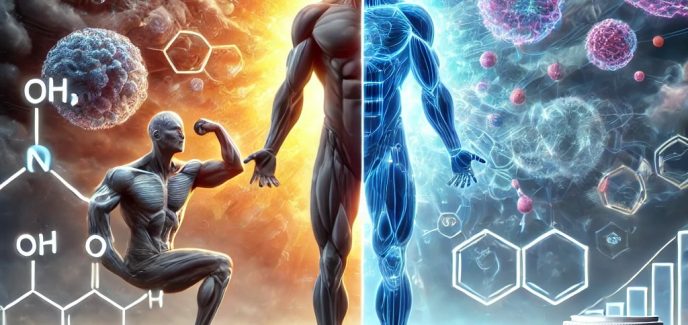How to Minimize the Risk of Hormonal Imbalances When Using Steroids
Practical tips and strategies to maintain hormonal health while using anabolic steroids responsibly.
Introduction
Anabolic steroids are widely used for muscle growth and performance enhancement, but they carry a significant risk of disrupting hormonal balance. Hormonal imbalances can lead to serious side effects, including mood swings, infertility, gynecomastia, and long-term health issues. However, with proper precautions and responsible use, these risks can be minimized.
This article explores strategies to reduce the likelihood of hormonal imbalances for individuals considering or already using anabolic steroids.
Understanding Hormonal Imbalances
Hormones are chemical messengers that regulate various functions in the body, including metabolism, growth, reproduction, and mood. Anabolic steroids mimic testosterone, a key hormone in muscle building. However, introducing synthetic hormones into the body can disrupt the natural hormonal balance, leading to conditions such as:
- Testosterone Suppression: The body reduces its natural testosterone production in response to external steroids.
- Estrogen Dominance: Steroids can convert to estrogen through a process called aromatization, leading to gynecomastia (enlarged breast tissue).
- Adrenal Fatigue: Overloading the endocrine system can stress the adrenal glands, leading to fatigue and hormonal disruptions.
Tips to Minimize the Risk of Hormonal Imbalances
1. Choose the Right Steroids
Not all steroids carry the same risk of hormonal imbalance. Beginners are advised to stick to mild compounds with lower aromatization potential, such as Anavar (Oxandrolone) or Primobolan (Methenolone). Avoid combining multiple steroids (stacking) until you understand how your body responds.
2. Use the Lowest Effective Dose
Start with the minimum effective dose to achieve your goals. High doses increase the risk of side effects without providing significantly greater benefits. A typical beginner’s cycle might include 300–500 mg of Testosterone Enanthate per week for 8–12 weeks.
3. Follow Proper Cycle Lengths
Extended steroid cycles can suppress natural testosterone production for a prolonged period, making recovery more difficult. Beginners should limit cycles to 8–12 weeks and avoid overlapping cycles.
4. Implement Post-Cycle Therapy (PCT)
Post-cycle therapy is critical to restore natural testosterone production after a steroid cycle. Common PCT medications include:
- Clomid (Clomiphene): Helps stimulate the production of luteinizing hormone (LH) and follicle-stimulating hormone (FSH).
- Nolvadex (Tamoxifen): Reduces estrogen levels and supports natural testosterone recovery.
A typical PCT protocol might last 4–6 weeks, starting 2 weeks after the last steroid dose.
5. Use Aromatase Inhibitors (AIs) If Necessary
Aromatase inhibitors, such as Anastrozole (Arimidex), can prevent the conversion of testosterone into estrogen. This reduces the risk of estrogen-related side effects like gynecomastia and water retention. Use AIs only under medical guidance to avoid excessive estrogen suppression.
6. Monitor Hormone Levels
Regular blood tests are essential to monitor hormonal levels during and after a steroid cycle. Key markers include testosterone, estradiol, luteinizing hormone (LH), follicle-stimulating hormone (FSH), and liver enzymes.
Consult a healthcare provider to interpret results and adjust your approach as needed.
7. Maintain a Healthy Lifestyle
A balanced diet, regular exercise, and sufficient sleep are crucial for hormonal health. Include foods rich in zinc, magnesium, and healthy fats to support testosterone production. Avoid excessive alcohol and processed foods, which can negatively affect hormonal balance.
Potential Long-Term Implications
Even with precautions, using anabolic steroids carries inherent risks. Prolonged use or misuse can lead to long-term issues such as infertility, liver damage, and cardiovascular problems. Always weigh the benefits against the risks and consider safer alternatives.
Conclusion
Minimizing the risk of hormonal imbalances when using steroids requires a responsible approach, including choosing the right compounds, following proper dosages, and implementing post-cycle therapy. Regular medical monitoring and a healthy lifestyle are essential for maintaining overall hormonal health.
For those considering steroid use, consulting a qualified healthcare professional is non-negotiable. Alternatives like natural supplements, optimized training, and nutrition can also provide excellent results without the risks associated with anabolic steroids.
Tags: hormonal imbalance, hormone health, minimize risks, post-cycle therapy, safe steroid use, steroids



